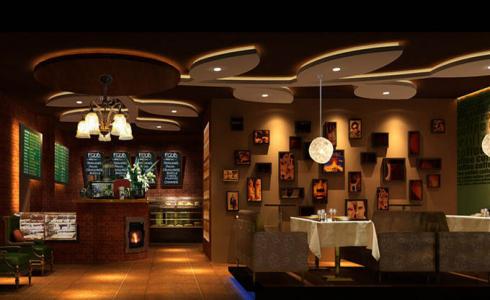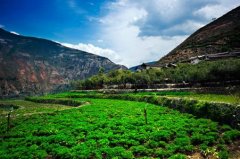A brief introduction to the treatment method of grinding degree and baking degree of Columbia exquisite coffee beans

Colombian coffee is really good, especially the sweetness and acidity balance has always been good! I have tried St. Augustine Manor Coffee in Huila in the past, and I remember it as a sense of sweetness, which greatly increased my affection for Colombian beans. Of course, after that, I have also tried some commercial bean-grade Colombian coffee. Although the flavor is not as layered and full of aroma as the boutique side, it is really a good coffee, especially the obvious fruit aroma. This is quite different from the nutty style of Brazilian beans, and the beans of these two major coffee producing countries do have their own characteristics. When I got the model student, I was really excited because I didn't even drink it, but in view of Raminita's prestige and quality, as well as my favorite two beans, Flower God and Raminita, when I first tested the baking, baked to 30 seconds after the explosion, and tested the taste of the beans in a shallow way.
The unique aroma of dried fruit smells young but ripe. I immediately felt that if I wanted to perform this bean well, I had to bake a little deeper and enter the world of second explosion or even second explosion. When baked to medium baking (second explosion) or even medium deep baking (second explosion), its dried fruit aroma becomes more ripe and caramel is sweeter, and the aroma can be similar to that of longan, but mixed with dark chocolate aroma.
Ripe beans are well balanced, full of aroma, slightly bitter and sweet, echoing bright sour fruit, moderate fruit taste, mild chocolate taste when shallow baking, similar to bitter sweet or heavy chocolate in the second explosion, the best in the early stage of the second explosion, very good mellow, rich in oil, and friends who usually like to drink Southeast Asian beans should also like this Colombian one.
The annual temperature there is about 18 degrees Celsius, the annual rainfall is 2000 to 3000 mm, latitude 1 °- 11 °15 north, longitude 72 °- 78 °west, and the specific range of elevation can exceed 2.000 meters. A special combination of factors, latitude, altitude, soil, plant origin of species and varieties of coffee production in Colombia's coffee growing area, rain patterns produced by the climate of the coffee growing area and tropical convergence, changing topography, luminosity, favorable temperature range throughout the year, moderation and Rain Water's distribution And include some common cultural practice areas in the process of selective logging and transformation, including washing and drying. Very suitable for the growth of coffee, mild climate, humid air, and can be harvested regardless of season, regardless of yield or texture, Colombian coffee is first produced by Medellin, which is characterized by full grains, rich nutrition, moderate acidity and good balance.
Na Linglong is located in the south of Colombia, Ecuador to the west, Cauca Coca, another famous producing area to the north, and Huila Huilan to the east. It is one of the three major producing areas (Cauca,Huila,Narino) in southern Colombia. It always produces high-quality coffee, with rich fruit acidity, good sweetness, medium mellow thickness and full nut characteristics. It is a good choice for blending or dripping coffee in a single producing area.
Colombian coffee workers go up the mountain to pick coffee beans (also known as coffee cherries) by hand, so they can pick carefully and pick the most ripe and full fruits. And the vast majority of coffee beans are water-washed, moderately roasted with a light, silky and sometimes sour taste, not as strong as Brazilian coffee and Italian Espresso, known as "green gold" in Colombia.
Important Notice :
前街咖啡 FrontStreet Coffee has moved to new addredd:
FrontStreet Coffee Address: 315,Donghua East Road,GuangZhou
Tel:020 38364473
- Prev

A brief introduction to the cultivation of exquisite boutique coffee in Columbia, geographical location, climate and altitude
And the annual rainfall in Nalinglong province shows a peak distribution, with a rainy season, which lasts from October of that year to May of the following year, and the dry season lasts for June, July and August. However, even in dry months, coffee farmers will not worry too much, because the warm current caused by trade winds from the southern continent will produce enough water vapor when they meet with a cool night, just to replenish the coffee trees with water.
- Next

Brief introduction of Yunnan small Coffee Huaguoshan Coffee Flavor, taste and aroma characteristics
Dehong: it is known as the hometown of coffee in China. As of 2011, a total of 120900 mu of coffee has been developed and planted in the state, accounting for 30% of the total coffee planting area in the country. In the next 3 years, the planting area of coffee in Dehong Prefecture will reach 200000 mu. Coffee plants in Dehong Prefecture are all above 1000 meters above sea level, of which 30, 000 mu are planted in mountains above 1600 meters above sea level, plus coffee is grown in Dehong Prefecture.
Related
- Detailed explanation of Jadeite planting Land in Panamanian Jadeite Manor introduction to the grading system of Jadeite competitive bidding, Red bid, Green bid and Rose Summer
- Story of Coffee planting in Brenka region of Costa Rica Stonehenge Manor anaerobic heavy honey treatment of flavor mouth
- What's on the barrel of Blue Mountain Coffee beans?
- Can American coffee also pull flowers? How to use hot American style to pull out a good-looking pattern?
- Can you make a cold extract with coffee beans? What is the right proportion for cold-extracted coffee formula?
- Indonesian PWN Gold Mandrine Coffee Origin Features Flavor How to Chong? Mandolin coffee is American.
- A brief introduction to the flavor characteristics of Brazilian yellow bourbon coffee beans
- What is the effect of different water quality on the flavor of cold-extracted coffee? What kind of water is best for brewing coffee?
- Why do you think of Rose Summer whenever you mention Panamanian coffee?
- Introduction to the characteristics of authentic blue mountain coffee bean producing areas? What is the CIB Coffee Authority in Jamaica?

